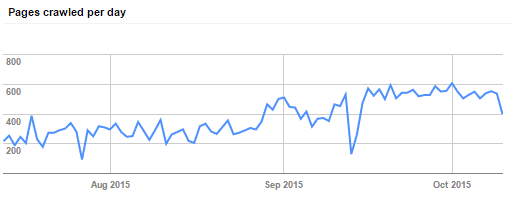
3 Ways to Increase Your Google Crawl Rate
3 Ways to Increase Your Google Crawl Rate:
Google crawl rates are what determines how quickly your website content ends up in Google search. It’s not the factor that gets it ranked, but it’s the first step to ensure you have a fighting chance, so without it your website is virtually dead in the water.
Before I talk about my 3 action points, I want to address a misconception about Google crawl:
Many website managers and even some SEO people think that Google only crawls their website once or twice a month, which is why they say: “that’s why it takes ages to get ranked”. But that isn’t the real reason why it takes ages to get ranked. Googlebot (the crawler) is not the Algorithm. It’s the algorithm that assigns rank. Googlebot is just the messenger, and likes to visit as often as possible.
Assuming your website has at least 1 followed link to it from somewhere (and I will tell you more about that shortly) then your website can get crawled by Googlebot. I liken Googlebot to a hungry wolf knocking on little piggy’s door. If you really-really want to stay out of Google search, you’ll need a website made of solid brick, not straw. And your doors and windows will have to be locked! That’s because Googlebot is very keen to get in there and see what you’ve got on your website, just as much as Mr Wolf wants to eat little piggy. So much so that it might visit several times per day to take another peek. It’s merciless.
When you connect Google Search Console to your website and take a look at the Crawl Stats section, you’ll see that Googlebot crawls almost every day, and on some websites it crawls as much as 10x the number of pages than your website actually has. In other words, it’s crawling the same pages several times over in any one day. The more pages it can crawl, the more likely your page will get indexed. I’ll repeat again though: the only relationship between crawl and rank is that your pages must be crawlable to get ranked. Crawl doesn’t determine rank position. Check out my article here about Google Search Console if you haven’t used it before.
OK: Here are 3 top things you can do to ensure your website is getting crawled as much as possible:
Sitemap Submission:
Add your website to Google Search Console and submit your sitemap. If you’re using WordPress as your CMS, I recommend Yoast SEO to generate sitemaps for your website. If you use another CMS, find out if their functions include a sitemap and take a note of the URL it generates. Typically, the sitemap location is at the root directory of a website and ends up with a URL like this: www.yourdomain.com/sitemap.xml . If your website doesn’t have a sitemap and you can’t generate one with the CMS or plugins / extensions, you can actually make one manually using a TXT file. Just list all of the URLs that your website has in a TXT file and upload the text file into the root directory of your website. Name it something like sitemap.txt, and your URL for that will bewww.yourdomain.com/sitemap.txt instead. You will need file upload access to use this option. All of your URLs need to be listed with a linebreak between each. To submit the sitemap, visit here in Google Search Console:https://www.google.com/webmasters/tools/sitemap-list
Sitemaps provide Google with the first full set of followed links to your website’s pages. It’s like having links on someone else’s website linking to yours. That website just happens to be Google.com in this case. Just be aware that the sitemap submission is an invitation to crawl. It isn’t a command to crawl, and Google has the right to ignore that invitation. In other words, the sitemap alone doesn’t guarantee crawl. What it does do is give all of your pages an even chance to begin with.
Fetch as Google:
Please visit to read the rest:
Original article here.
